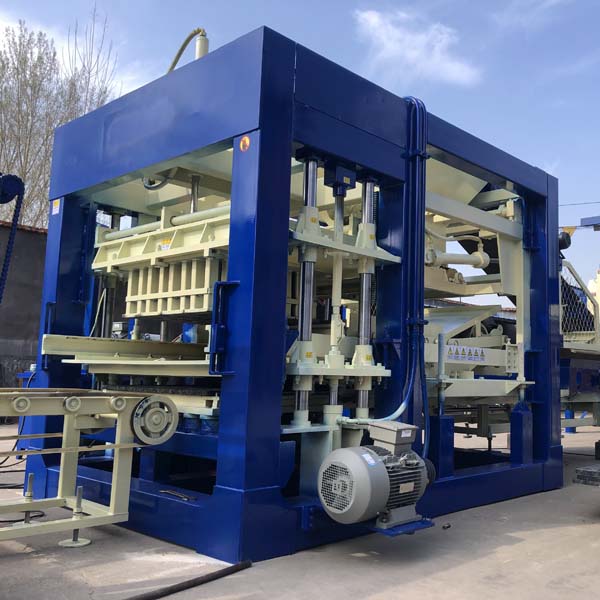
In the dynamic world of construction, technology has continually played a pivotal role in reshaping traditional practices.
One such transformative innovation is the advent of cutting-edge block machine technology.
These advanced machines have revolutionized the construction industry by streamlining processes, increasing efficiency, and contributing to sustainable building practices.
This essay explores the profound impact of cutting-edge block machine technology on construction, highlighting its key features, benefits, challenges, and implications for the future.
The Evolution of Block Machine Technology
The history of block machine technology dates back to the early 20th century when manual block-making processes dominated construction sites.
Labor-intensive and time-consuming, these methods limited the speed and scale of construction projects.
However, the advent of mechanized block machines marked a significant turning point. Early versions of block machines introduced mechanization, allowing for higher production rates and more consistent block quality.
Over time, these machines evolved to incorporate more sophisticated features, leading to the development of cutting-edge block machine technology.
Key Features and Innovations
Modern block machines have witnessed a remarkable transformation, incorporating an array of features that enhance efficiency, precision, and versatility.
One key innovation is the integration of computerized controls and automation.
This enables precise control over block dimensions, density, and surface finish, resulting in uniform and aesthetically pleasing blocks.
Moreover, cutting-edge block machines offer modular designs that allow for easy customization and adaptation to different block types and sizes.
Another noteworthy advancement is the incorporation of sustainable practices.
Many modern block machines are designed to utilize recycled materials, reduce energy consumption, and minimize waste generation.
Some machines even utilize alternative binders, such as fly ash or slag, which not only contribute to environmental conservation but also enhance the performance of the blocks themselves.
Benefits for the Construction Industry
The adoption of cutting-edge block machine technology has brought forth a plethora of benefits for the construction industry.
Foremost among these is increased efficiency. With automated processes and higher production rates, construction projects can be completed in shorter timeframes, reducing overall costs and boosting profitability.
Additionally, the consistency in block quality ensures structural integrity and enhances the longevity of constructed buildings.
Furthermore, these machines have played a pivotal role in promoting sustainable construction practices.
The use of recycled materials and environmentally friendly binders aligns with the growing demand for eco-conscious building solutions.
This not only reduces the carbon footprint of construction projects but also positions builders as stewards of the environment.
Challenges and Future Considerations
While cutting-edge block machine technology presents numerous advantages, it is not without its challenges.
Initial setup costs and the need for specialized training can deter some construction firms from adopting this technology.
Moreover, the integration of automation and computerized controls may lead to concerns about job displacement within the construction workforce.
To address these challenges, stakeholders must prioritize knowledge dissemination and workforce training.
Investing in education and skill development can equip workers with the expertise required to operate and maintain these machines effectively.
Additionally, industry collaboration and research initiatives can drive down the costs associated with acquiring and implementing cutting-edge block machine technology.
Implications for the Future
The unveiling of cutting-edge block machine technology marks a pivotal moment in the evolution of construction practices.
As this technology becomes more accessible and widespread, it holds the potential to reshape the industry on a global scale.
The increased efficiency and sustainable practices facilitated by these machines align with broader societal trends towards responsible resource management and environmental stewardship.
Looking ahead, the construction industry is poised to experience a paradigm shift, with traditional methods giving way to automated, precise, and sustainable approaches.
This evolution may also spur innovations in other areas of construction, such as design, project management, and materials science.
Ultimately, the future of construction lies in the seamless integration of technology and craftsmanship, where cutting-edge block machines serve as the cornerstone of a more efficient, sustainable, and visionary built environment.
In conclusion, cutting-edge block machine technology has emerged as a transformative force in the construction industry.
Its evolution from manual labor to automated precision showcases the power of innovation to reshape traditional practices.
The integration of key features, benefits for the construction industry, challenges, and future implications highlight the multifaceted nature of this revolution.
As construction professionals continue to embrace and refine cutting-edge block machine technology, we can anticipate a construction landscape characterized by unprecedented efficiency, sustainability, and creativity.
By embracing these advancements and addressing challenges head-on, the industry is poised to pave the way for a future where construction is not only functional but also environmentally responsible and forward-thinking.
